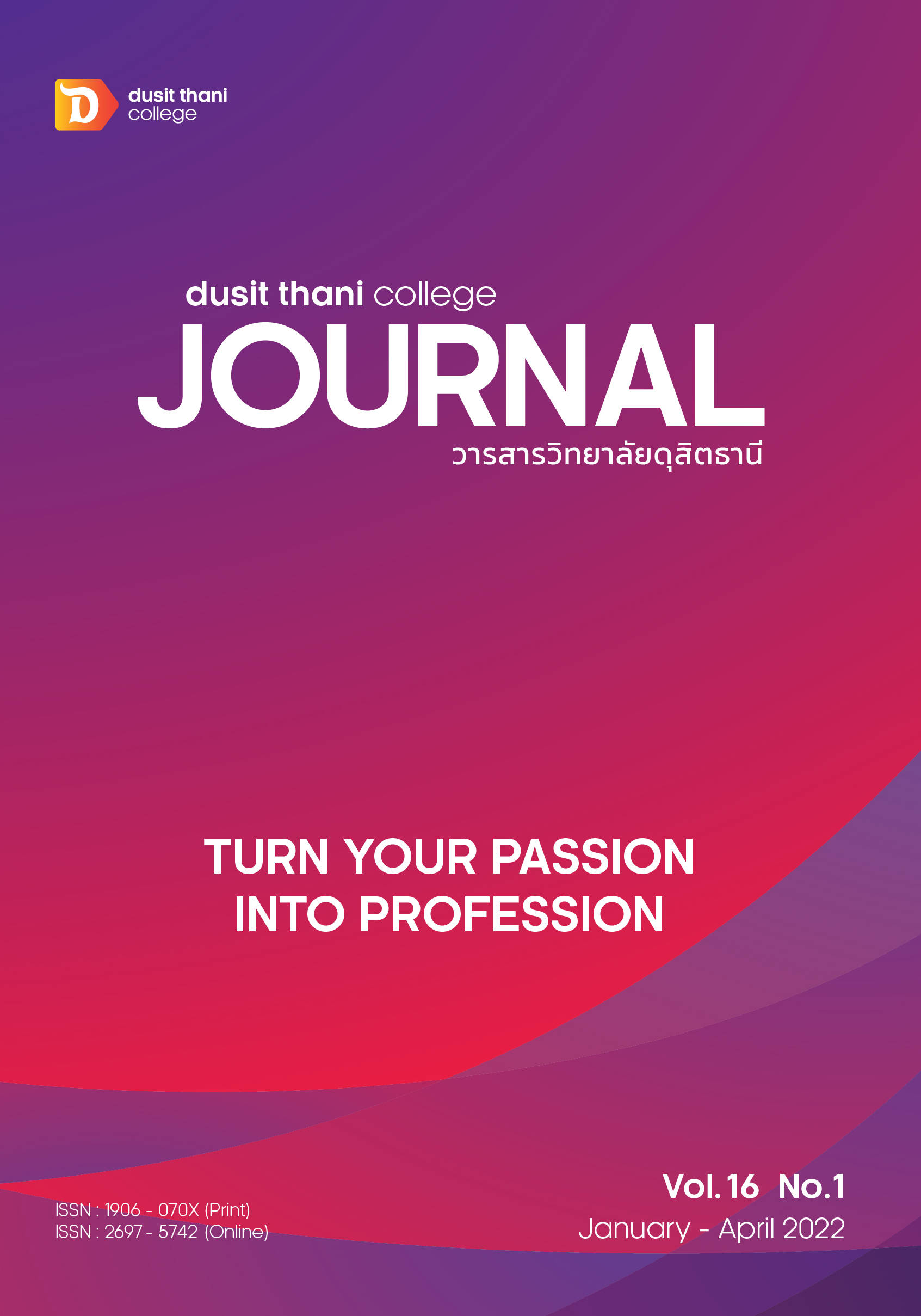The Causal Relationship of the Success Factors of the Hotel Business Operations in Prachuap Khiri Khan District for Enhancing the Sports Tourism
Main Article Content
Abstract
This research aimed to study the success factors of the hotel business operation, and to analyze the causal relationship structure of the success factors of the hotel business operations to enhance sports tourism. The researcher chose a mixed research method; qualitative research used document research and In-depth interviews with 20 key informants; and quantitative research by survey data collection with questionnaires from hotel operators and executives in the area of Prachuap Khiri Khan Province, a total of 281 people. This research used proportional stratified sampling method and specific sample selection; the research used tools including Semi-structured interview and questionnaire. The data were analyzed using a consensus dimensional distribution table, descriptive and inferential statistics using Linear Structure Relations program (LISREL).
The results showed that 1) the developed causal relationship model was harmonious with the empirical data, with the values of c2 = 88.93, df=34, p-value= 0.26, GFI= 0.97, AGFI= 0.92, CFI = 1.00, RMSEA = 0.02. The results found that the hotel's performance received the highest overall influence from the valued-sports innovation, followed by creative management, enhancing the services of sports and special events, upgrading the service innovation strategy, and fostering the learning organizations. The influence coefficients were 0.0.45, 0.25, 0.20, 0.18 and 0.10, respectively; there were 78% variables in the model that could explain the variance of the hotel's performance. The leaning organization received the highest overall influence from creative management with an influence coefficient of 0.95; the variables in the model accounted for 90% of the variance in the fostering the learning organizations. Moreover, the upgrading service innovation strategies received the highest overall influence from creative management with an influence coefficient of 0.90, the variables in the model accounted for 82 percent of the variance of upgrading service innovation strategies.
Article Details

This work is licensed under a Creative Commons Attribution-NonCommercial-NoDerivatives 4.0 International License.
Article Screening Policy
- All research and academic articles to be published must be considered and screened by three peer reviews in the relevant field / article.
- All articles, texts, illustrations and tables published in the journal are the personal opinions of the authors. Editors don't always have to agree. And no responsibility whatsoever is the sole responsibility of the author.
- The articles to be published must never be published. Where did you first publish? And not in the consideration of other journals If the audit found that there has been a duplicate publication It is the sole responsibility of the author.
- Any article that the reader sees as being plagiarized or impersonated without reference. Or mislead the work of the author Please let the journal editor know it will be your greatest blessing.
References
Arastham, P., Rapeepan, T., Mongkol, N., and Dewan, N. (2005) Development of Tourism Potential for Sports and Exercise Recreation. Retrieved from https://tatrd.tourismthailand.org/research?_export_type=html&keywords=&order/
Aslam, M., Haris, S., Khuram, S., Aly, R., and Ramish, A. (2014). Social capital and knowledge sharing as determinants of academic performance institute of behavioral and applied management. United States: Glendale, Journal of Behavioral and Applied Management, 15: 25-41.
Borovcanin, D., Cuk, I., Lesjak, M., and Juvan, E. (2020). The Importance of Sport Event on Hotel Performance for Restarting Tourism After COVID-19. Societies. Retrieved from https://doi.org/10.90.10.3390/soc10040090
Calantone, R. J., Cavusgil, S. T., and Zhao, Y. (2002). Leaning orientation, firm innovation capability, and firm performance. Industrial Marketing Management, 31(6): 515-524.
Chalip. L., and O’ Brien. (2008). Sport Events Strategic Leveraging: Pushing Towards the Triple Bottom Line. Martin, D., & Woodside A.,. (red.) Tourism Management: analysis, behavior and strategy Wallingford, UK Cambridge, MA: CAB1 Pub.
Cobb, S., and Olberding, D.J. (2007). The Importance of Import Substitution in Marathon Economic Impact Analysis. Int. J. Sport Finance, 2, 13.
Dulger, M., Alpay, G., Yilmaz, C., and Bodur, M. (2014). How do learning orientation and strategy yield innovativeness and superior firm performance? South African Journal of Business Management, 45(2): 35-50.
Kersulic, A., Peric, M., and Wise, N. (2020). Assessing and Considering the Wider Impacts of Sport-Tourism Events: A Research Agenda Review of Sustainability and Strategic Planning Elements. Sustainability, 4473.
Lesjak, M., Axelsson, E., and Mekinc, J. (2017). Sports Spectators Tourism Reason When Attending Major Sporting Events: Euro Basket 2013, Koper, Slovenia. Eur. J. Tour. Res, 16: 74–91.
Limpairote, N. (2011). Guidelines for the development of sports tourism in Nakhon Ratchasima Province. Master of Business Administration Thesis. Khon Kaen University.
Marko, P. (2015). Managing Sports Experiences in the Context of Tourism. UTMS Journal of Economics, 6(1): 85–97.
Mohammad, E., Hossein, S., Sogdel, P., Akbar, H., and Arefeh, J. (2012). The Impact of Hosting Sporting Events on Sport Tourism Development: A Case Study. International Journal of Research in Business and Social Science, 1(1): 2147-4478.
Nunally, J. (1978). Psychometric theory. New York, NY: McGraw-Hill.
Sethaphanich, S. (2007). Development of an administrative system that focuses on excellence of private educational institutions. Ph.D. Thesis. Educational Administration Branch Graduate school, Chulalongkorn University.
Weed, M. (2006). Sports Tourism and the Development of Sports Events. Retrieved from https://www.idrottsforum.org


